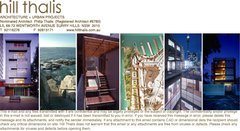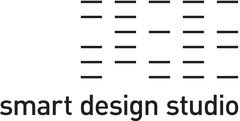Andrew Burges Architecture

Andrew Burges Architects is a design-focused studio practice with expertise in single residential dwellings, multi-residential housing, master planning, civic and public buildings. We aspire to a model of creativity that is open and collaborative, working with clients, consultants and staff to foster an intelligent engagement with the circumstances of each site and brief rather than the repetition of a signature style. We are committed to architectural excellence at all phases of the design and construction process, maintaining a focus on inventive strategies and carefully considered problem-solving from first sketches through to the approval, documentation and construction of projects.
Driving directions to Andrew Burges Architecture on map
Andrew Burges Architecture on Google Maps
Projects:
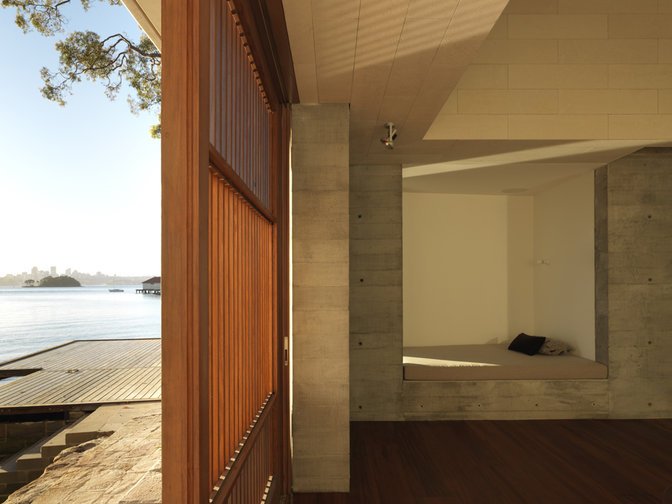
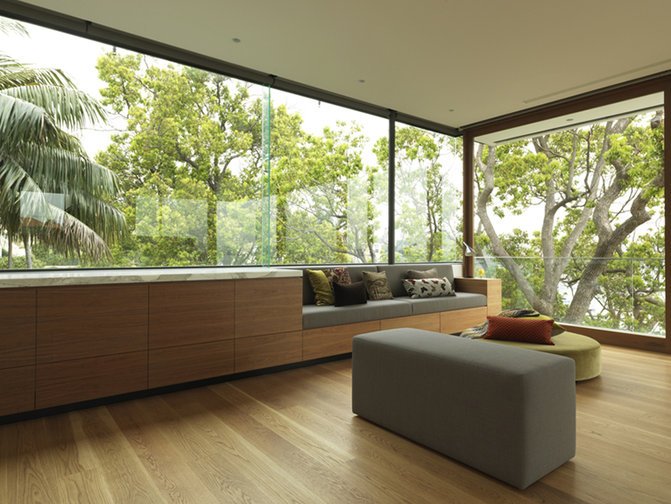
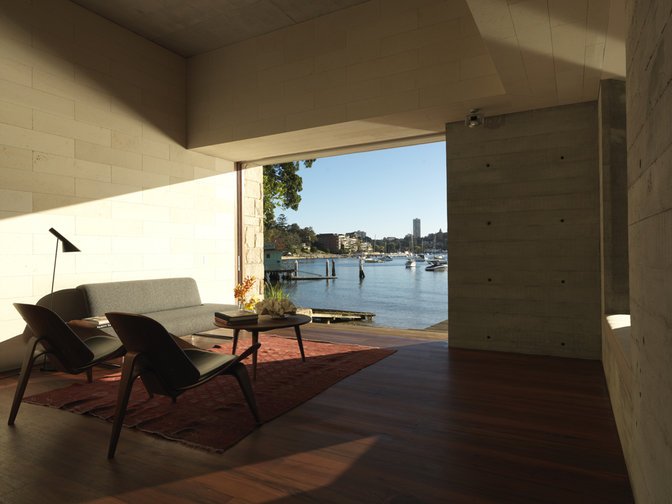

Harbourside Apartments & Boathouse
Point Piper, Sydney, NSW, 2010
The Point Piper Apartment Building is located on a steeply sloping waterfront site above Seven Shillings beach. Classified as an alterations and additions to an existing 4 level duplex building, the redevelopment of the site now consists of a seven level structure containing one luxury 3 level apartment, an upper level two storey apartment with a private rear courtyard, and two levels of harbourside landscape structures including a small boathouse on the water’s edge. With much of the footprint determined by the previous building on the site, the form of the building attempts to negotiate a position between the sheer walls of the surrounding 4-10 level apartment buildings and the formless ‘ziggurat’ terracing of much recent harbourside development. The seven level western facade has been modulated through subtle material variations and a language of deeply recessed openings moderating the afternoon sun while providing a more sculpted form for the building in shadow. At the harbours edge, the two level boathouse structure has been constructed in timber, off form concrete and sandstone drywall to create a robust landscape character to the lower levels of the development.

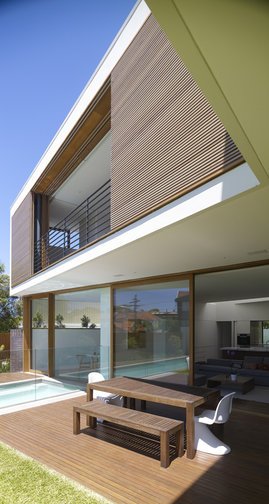
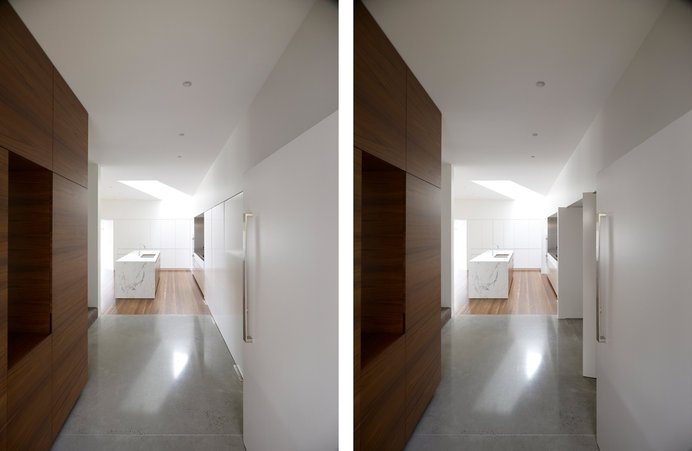
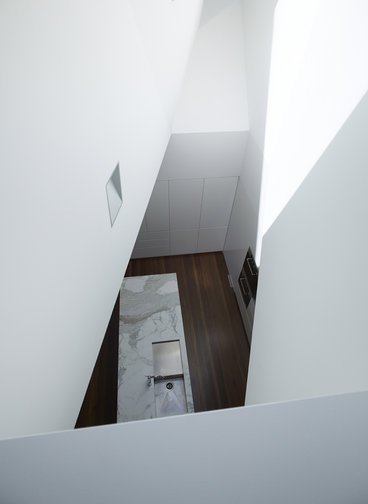
Back to Front House
Waverley, NSW, 2009
The brief for the project was for a new house with a contemporary coastal character that contained 4 bedrooms, a study, and a pool and garden area on a 470 sq.m site. The first concept for the house, derived from the specific orientation and geometry of the site, was to reverse the pre-existing and typical site organisation of the suburban block to allow the residence to have a series of north facing living rooms opening onto a private garden and pool area. The second concept derived from a general observation about the role of the ubiquitous boundary fence in structuring privacy and outlook on suburban sites, using the fence as a critical datum point that shaped the geometry and outlook of the two floor plans. The ground floor, with a more internal site character, is a highly structured floor plan with clearly defined rooms maximising access to north sun. The upper level plan becomes more fractured and diverse as individual rooms shift alignments and geometries to access light, views and outlook in relation to the varied context of buildings and landscape that opens up above the line of the datum fence.
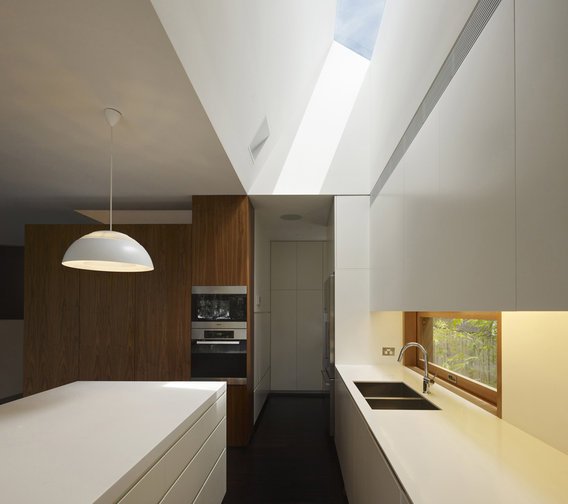

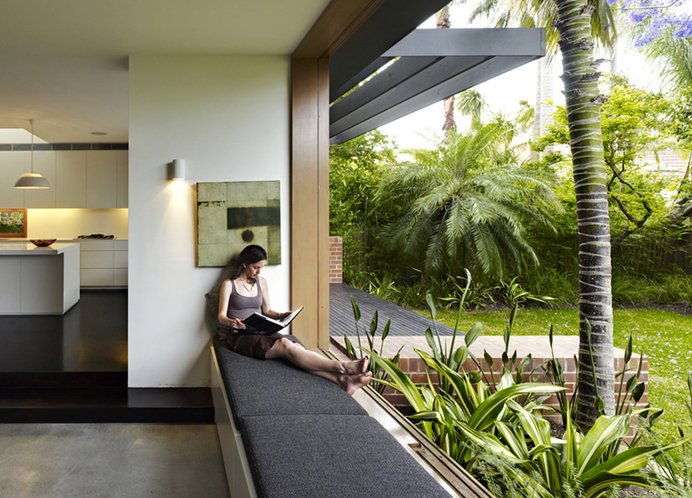
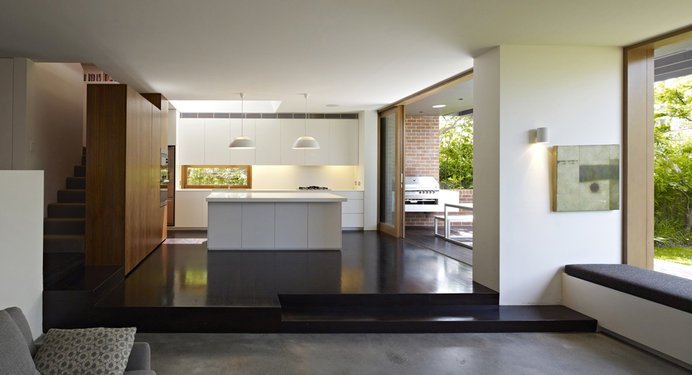
Inhabited Roofscape
Bronte, NSW, 2010
Located within a tightly scaled streetscape of intact federation dwellings in Bronte, the brief for this residential project was to replace a 1970’s rear addition with a new two storey structure containing a new living room, kitchen, laundry and dining room on the lower level, and a new main bedroom, ensuite and study on the upper level. Projecting the lines of the heritage listed pyramidal front roof to form a building envelope for a rear addition, the 2 storey rear pavilion was conceived as a habitable roof sitting above terraced platforms opening into the garden. The new proposal was conceptualized as three distinct elements. The original face brick base that extended to contain both the original Queen Anne dwelling and the new pavilion addition, the original pyramid structure of the Queen Anne cottage preserved in its entirety and a new lightweight, compact, inhabited roof structure sitting on the extended masonry walls of the front of the dwelling. Within this tight framework we worked with the idea of compactness to create a complex section of habitable rooms, storage space, stairs and skylights within the projected envelope of the front roof footprint. The use of a single secondary element within the roof profile ‘ an over-scaled dormer window located on the less visible eastern elevation, allowed the creation of a bedroom with generous views towards the coast.



